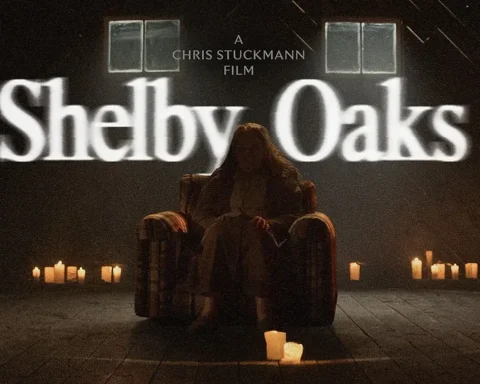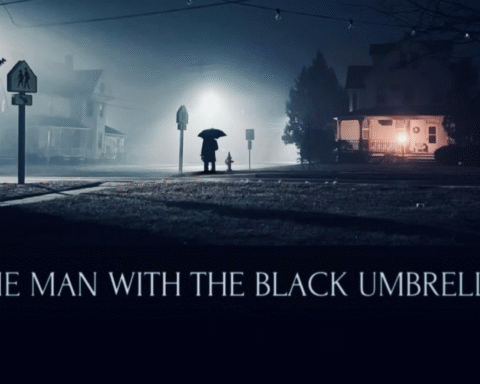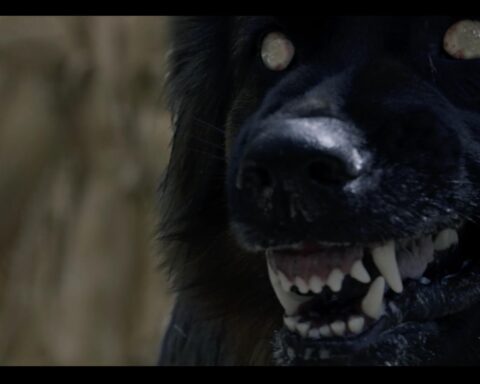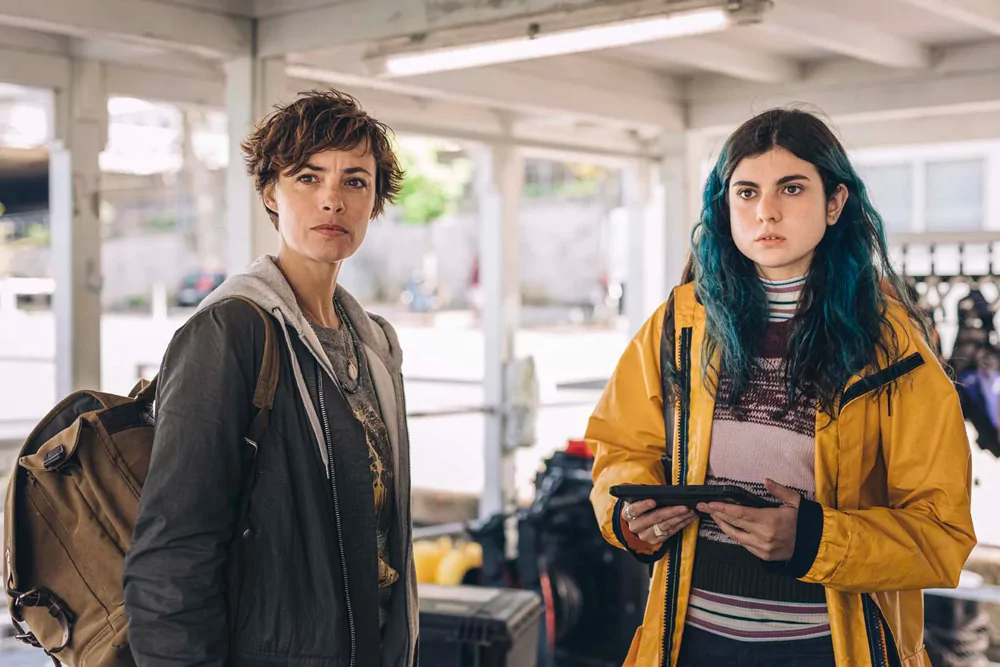The Vatican, often viewed as a bastion of ancient religious practice, plays a significant role in the cultural and spiritual narratives of many people worldwide. Headquartered in Vatican City, this sacred institution is not only the epicenter of the Roman Catholic Church but also a symbol of enduring traditions and ecclesiastical authority. Its enigmatic aura, steeped in centuries of history and spiritual mystique, makes it a compelling focus for storytelling, especially in the realm of cinema.
Exorcisms, often depicted as dramatic confrontations between good and evil, have long been a staple in the world of horror movies. These religious rites, intended to expel demonic entities, have captivated audiences with their intense and often terrifying portrayal of spiritual warfare. The Catholic Church, and by extension the Vatican, is historically linked to the practice of exorcism, adding an aura of authenticity and gravitas to these cinematic stories. The combination of the Vatican’s solemn, reverent history and the harrowing appeal of exorcism rituals taps into deep-seated fears and curiosity about the supernatural.
Cinematic storytelling that merges the ancient practices of the Vatican with modern horror elements has a unique way of engaging audiences. The clash between age-old religious rites and contemporary cinematic horror creates a dynamic that is both fascinating and chilling. This juxtaposition allows for a rich exploration of themes such as faith, redemption, and the eternal battle between light and darkness. The interplay of these elements fosters an enduring fascination that continues to draw viewers to such films.
Moreover, movies about the Vatican and exorcisms serve as a cultural and psychological exploration of our collective fears and beliefs. They offer a lens through which we can examine our anxieties about the unknown and the unseen, all while providing a thrilling and immersive cinematic experience. These films not only entertain but also provoke thought about the depths of human spirituality and the relentless quest for protection against malevolent forces. This interplay between horror and religious tradition sets the stage for an engaging examination of the best movies that delve into these themes.

The Exorcist (1973): The Father of All Exorcism Films
“The Exorcist,” directed by William Friedkin and released in 1973, stands as a seminal film in the horror genre, laying the foundation for subsequent movies dealing with exorcism and the Vatican’s secretive rituals. Based on William Peter Blatty’s novel of the same name, the plot follows the harrowing ordeal of a mother, Chris MacNeil, whose daughter Regan becomes possessed by a malevolent entity. The narrative intricately details the involvement of two priests, Father Karras and Father Merrin, as they attempt to rid Regan of her demonic tormentor, employing ancient rites sanctioned by the Vatican.
Critically acclaimed, “The Exorcist” received ten Academy Award nominations, securing two wins for Best Adapted Screenplay and Best Sound. Its realistic and gritty portrayal of an exorcism fascinated and terrified audiences, garnering both critical acclaim and commercial success. The film’s stark and visceral approach redefined horror cinema, replacing traditional gothic elements with modern-day urban settings and psychological intensity. This pivot towards a more realistic portrayal of horror helped the genre gain respectability within the cinematic community.
Cultural impact wise, “The Exorcist” profoundly influenced public perception of exorcism and the Vatican’s clandestine practices. It brought to light the often shrouded and mysterious rites performed by the Church, fascinating a generation with its blend of religious and supernatural themes. Iconic scenes, such as Regan’s head-spinning or the eerie changes in her voice, have since become emblems in horror cinema. The performances of Linda Blair as Regan and Max von Sydow as Father Merrin remain etched in movie history, praised for their intense and immersive realism.
Ultimately, “The Exorcist” remains a benchmark for films centered on exorcism, setting a high standard for those that followed. Its influence permeates contemporary horror cinema, continuously inspiring filmmakers to explore the chilling intersection of religion, the supernatural, and human vulnerability.
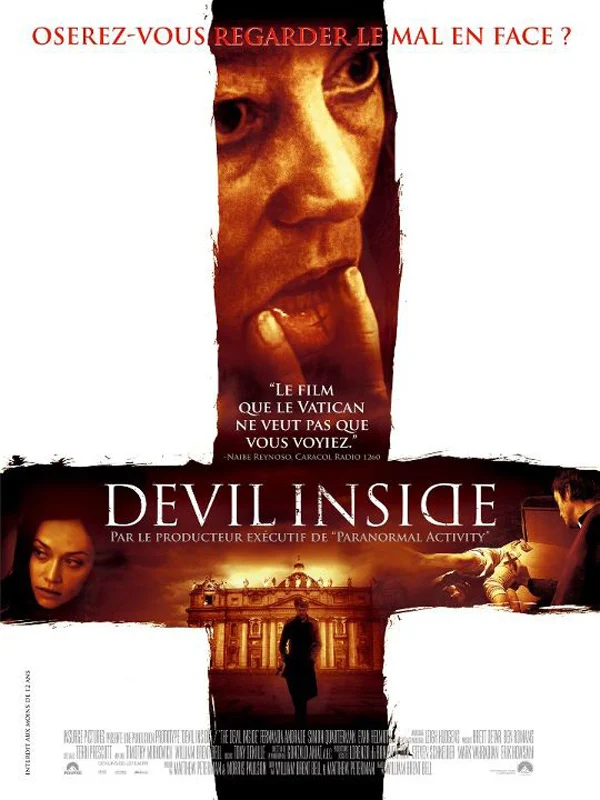
The Devil Inside (2012): A Mother-Daughter Journey into Darkness
“The Devil Inside” (2012) takes the viewer on a harrowing exploration of the supernatural through a mockumentary-style lens. Helmed by director William Brent Bell, the film chronicles the journey of Isabella Rossi, portrayed by Fernanda Andrade, as she seeks to uncover the enigmatic circumstances surrounding her mother’s exorcism, conducted within the mystical cloisters of the Vatican.
The plot weaves a deeply personal narrative with broader implications about exorcism and the Vatican’s involvement in such dark rituals. Isabella’s mother, Maria Rossi, played by Suzan Crowley, has been institutionalized after being linked to a horrific multiple murder during her own exorcism. Driven by a quest for truth and understanding, Isabella travels to Rome, accompanied by a documentary film crew, aiming to delve deeper into the unsettling events that led to her mother’s incarceration.
One of the film’s defining features is its mockumentary style. By adopting this approach, “The Devil Inside” brings an added sense of realism and immediacy rarely seen in traditional horror cinema. The handheld camera work and spontaneous, unpolished interviews create a pseudo-authentic atmosphere, making the audience feel as if they are witnessing actual events unfold. This stylistic choice not only amplifies the scares but also lends a chilling plausibility to the storyline, blurring the line between fiction and real-life exorcisms.
The Vatican’s role in exorcisms, as depicted in the movie, adds an intriguing layer of complexity. The institution’s guarded and mysterious nature, coupled with its deep-rooted history in spiritual warfare, provides a potent backdrop for the narrative. The film carefully navigates the Vatican’s secrecy, casting it as both a beacon of hope and a fortress harboring dark secrets. These themes not only enrich Isabella’s personal quest but also contribute to the broader canon of exorcism-centric horror films.
Comparatively, “The Devil Inside” stands apart from other genre films like “The Exorcist” or “The Rite” by its distinctive documentary flavor. While those films focus more on dramatic storytelling, “The Devil Inside” immerses viewers in a visceral experience, making the terror more intimate and immediate. Consequently, it leaves a lasting impression as a notable entry in the realm of horror cinema centered around the Vatican and exorcisms.

The Vatican Tapes (2015): Unleashing Ultimate Evil
‘The Vatican Tapes’ (2015) is a modern entry into the realm of horror films that focus on exorcism and the Vatican’s involvement in combating demonic forces. The movie narrates the chilling tale of Angela Holmes, a seemingly ordinary young woman whose life takes a dark turn after a mysterious accident. Over time, it becomes evident that Angela is possessed by an ancient, malevolent entity. As her behavior grows increasingly erratic and violent, the Vatican steps in to perform an exorcism, initiating a terrifying confrontation between sacred power and sinister evil.
Central to the film’s plot are several key characters: Angela, portrayed by Olivia Taylor Dudley, embodies the vessel through which ultimate darkness seeks to infiltrate the world. Father Lozano (Michael Peña) and Father Bruun (Djimon Hounsou) provide the religious counterbalance, embodying the Vatican’s effort to dispel the demonic presence and restore peace. Their struggle is not only physical but deeply spiritual, emphasizing the dichotomy of faith against terror.
The film expertly weaves religious symbolism and Vatican rituals into its narrative, enhancing the authenticity of the exorcism scenes. The use of Latin prayers, holy water, and sacred relics creates a profound connection to traditional exorcism practices. These elements are carefully integrated to build a palpable sense of dread and anticipation, making the viewers feel as if they are witnessing a genuine battle between celestial and infernal forces.
Narrative techniques such as found footage and point-of-view shots are employed to heighten suspense. These methods immerse the audience in the harrowing experiences of the characters, capturing the chaos and fear from various perspectives. The portrayal of exorcism as an intense, ultimate clash between good and evil is central to the film’s impact, depicting the Vatican not just as a religious institution but as a formidable adversary in the face of unparalleled darkness. Through this lens, ‘The Vatican Tapes’ contributes a unique and gripping chapter to the legacy of exorcism cinema, leaving viewers with a deep sense of unease and contemplation.

The Rite (2011): Training the Next Generation of Exorcists
The 2011 film The Rite is a compendium of suspense and philosophical inquiry, weaving the story of a seminary student, Michael Kovak, portrayed by Colin O’Donoghue, who is reluctantly thrust into the world of exorcism. Inspired by true events, the film offers a unique glimpse into the Vatican’s dedicated efforts to tackle demonic possession. Initially skeptical, Michael’s journey is marked by his participation in an exorcism school in Rome, where he encounters Father Lucas Trevant, a character masterfully brought to life by Anthony Hopkins.
Father Lucas, an enigmatic and seasoned exorcist, becomes an unlikely mentor who guides Michael through the labyrinth of faith and doubt. Anthony Hopkins’ performance is a cornerstone of the film, imbuing his character with an unsettling intensity that challenges Michael’s agnosticism. The narrative arc drives Michael from skepticism to a crisis of belief, ultimately compelling him to confront the supernatural occurrences that defy his rational understanding.
The Rite also provides an illuminating perspective on the Vatican’s clandestine role in exorcism rites. The portrayal of the Vatican as both a bastion of faith and a center for rigorous spiritual training adds depth to the film’s storyline. It accentuates the institution’s commitment to combating evil, underpinned by a rich history of spiritual warfare. This dimension of the film sparks philosophical contemplation on the nature of faith, the existence of evil, and the human propensity towards skepticism in the face of inexplicable phenomena.
The film succeeds not only as a piece of horror cinema but also as a thoughtful examination of belief and the battle against darkness. The tension between faith and doubt is a recurring theme, making The Rite a compelling study in spiritual conflict, profoundly resonant with those intrigued by both horror and theological discourse.
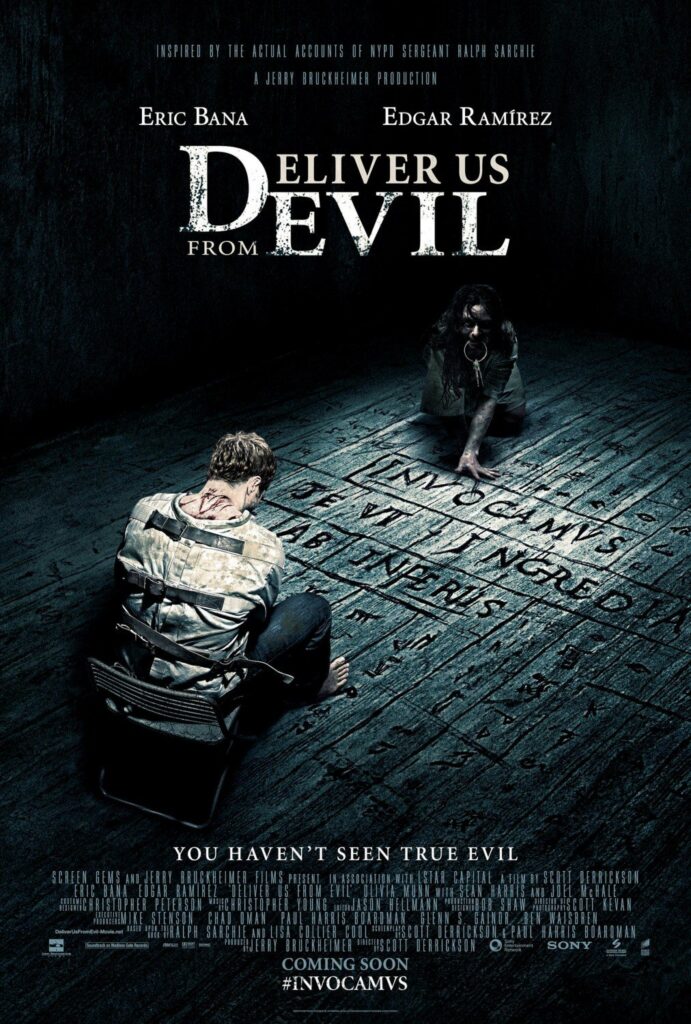
Deliver Us from Evil (2014): When the Vatican Comes to the Bronx
‘Deliver Us from Evil’ (2014) stands out as a multifaceted horror film that uniquely combines elements of crime thriller and religious horror, set against the gritty backdrop of the Bronx. The movie tells the gripping story of NYPD officer Ralph Sarchie, played by Eric Bana, who finds himself partnering with Father Mendoza, a Jesuit priest specializing in exorcisms, portrayed by Édgar Ramírez.
Throughout the film, the clash between secular law enforcement and deeply rooted religious practices is brought to the forefront. As Sarchie navigates the labyrinthine world of crime in New York, he is profoundly skeptical of Mendoza’s claims about supernatural occurrences. However, as the narrative progresses, increasingly eerie and inexplicable events challenge Sarchie’s disbelief, leading him to realize that some problems cannot be solved by conventional police work alone.
The film’s gritty aesthetic amplifies the sense of dread that permeates its setting. From dark, foreboding alleyways to run-down, decrepit homes, every location is meticulously designed to heighten the suspense. This atmosphere is further enriched by the raw, emotional character arcs. Sarchie’s transformation from a hardened skeptic to a believer, driven by his desire to protect his family, runs parallel to Mendoza’s mission to combat demonic forces, showing a man of faith grappling with his own past sins.
Key scenes in ‘Deliver Us from Evil’ bring the Vatican’s influence into sharp relief. Whether it’s the meticulous exorcism rituals or the detailed portrayal of religious artifacts, the film conveys a sense of authenticity and respect towards the Catholic tradition. The exorcism scenes, in particular, are intense and vividly depict the spiritual battle between good and evil, demonstrating the gravitas of the Vatican’s sanctioned practices.
In blending the procedural grind of police work with the harrowing aspects of exorcism, ‘Deliver Us from Evil’ offers a unique take on horror cinema. It effectively portrays how disparate worlds—secular and religious—collide and collaborate to confront the malevolent forces lurking beneath the surface of everyday life.
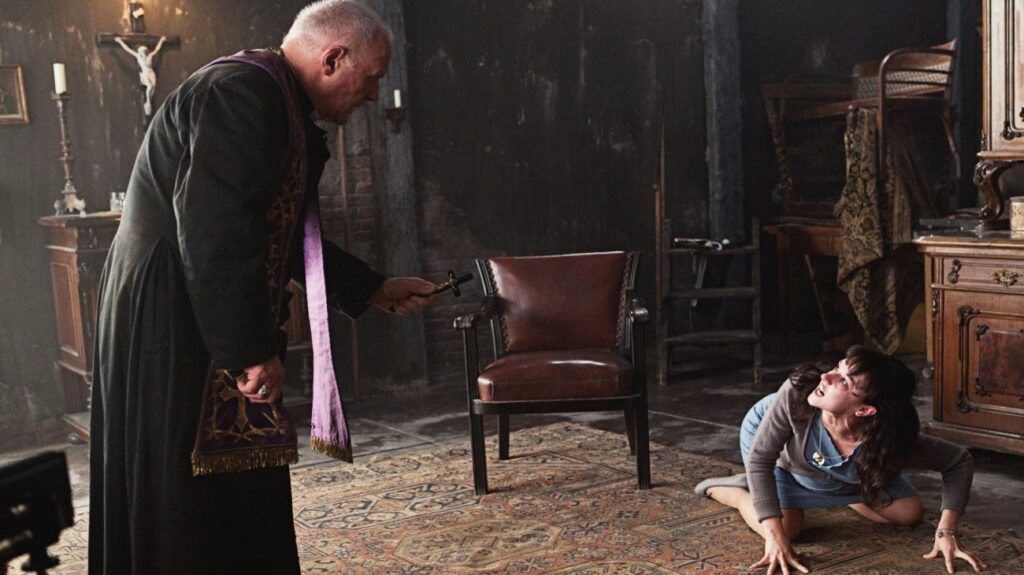
Themes and Tropes in Vatican Exorcism Movies
Vatican exorcism movies often delve into the quintessential conflict of good versus evil, manifested through harrowing battles between spiritual forces. The dichotomy prominently features the Church, represented by priests, and demonic entities, symbolizing malevolence. This classic narrative resonates deeply with audiences for its universal portrayal of the struggle between light and darkness. Through these films, viewers are invited to witness the triumph of faith over malice, resonating with their intrinsic hope for good to prevail.
Another recurring theme in such movies is the tension between faith and skepticism. The cinematic drama is heightened by characters who fluctuate between doubt and belief, often leading their journeys towards spiritual enlightenment or despair. This tension captures the viewers’ imagination, reflecting real-world scenarios where faith is questioned, and skepticism is challenged. Films like “The Exorcist” epitomize this duality, presenting characters who undergo spiritual awakenings amid supernatural chaos.
Religious artifacts and rituals play a pivotal role in Vatican exorcism movies, imbuing the narrative with authentic religious overtones. Crucifixes, holy water, and ancient texts are more than mere props; they are potent symbols of divine intervention. These elements not only aid in intensifying the dramatic tension but also provide a sense of historical continuity and legitimacy to the exorcism rituals depicted. The ceremonial nature of these rituals, often portrayed with meticulous detail, underscores the gravity of the spiritual conflict.
The cinematic interpretation of Vatican exorcism themes often differs significantly from other horror genres. While slasher films focus on visceral fear and ghost stories dwell on the unknown, exorcism movies engage the audience’s spiritual psyche. The horror in these films is not just about the monsters but also about confronting one’s inner demons and spiritual vulnerabilities. This layered approach to horror, combined with the universal themes of faith and salvation, sets Vatican exorcism movies apart as a unique and compelling sub-genre within the larger world of cinema.

The Enduring Appeal of Vatican Exorcism Films
The enduring allure of Vatican exorcism films lies in their unique blend of mystery, horror, and religious intrigue. These films tap into universal fears and deep-seated anxieties about the unknown, making them a potent combination that continues to captivate audiences around the world. By weaving together elements of ancient religious rituals, the battle between good and evil, and the chilling prospect of demonic possession, these movies offer a cinematic experience that is both terrifying and thought-provoking.
One of the key reasons for the lasting popularity of this subgenre within horror cinema is its ability to evoke a visceral, emotional response. The Vatican, with its centuries-old traditions and aura of secrecy, provides an enigmatic backdrop that amplifies the tension and stakes. This setting, coupled with the dramatic and often shocking nature of exorcisms, ensures that these films leave a lasting impact on viewers.
Moreover, Vatican exorcism films offer a unique narrative space where spiritual and supernatural elements intersect, appealing to a diverse audience. Whether one views these films through the lens of faith, skepticism, or pure entertainment, they provide a rich tapestry of themes and motifs to explore. As such, the genre continues to evolve, with filmmakers frequently introducing new interpretations and stylistic approaches to keep the content fresh and engaging.
Looking ahead, the potential for further innovation within this genre appears boundless. As horror cinema continues to push boundaries and explore new storytelling techniques, Vatican exorcism films are likely to remain a staple, reflecting cultural shifts and emerging societal fears. For those interested in delving deeper into this captivating subgenre, films like “The Exorcist,” “The Rite,” and “The Nun” provide additional avenues for exploration beyond the titles discussed.
Overall, the enduring appeal of Vatican exorcism films underscores their significance within the horror landscape, securing their place as a fascinating intersection of faith, fear, and cinematic artistry.

